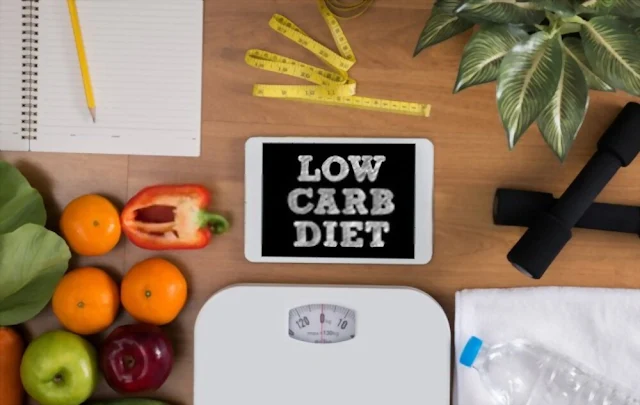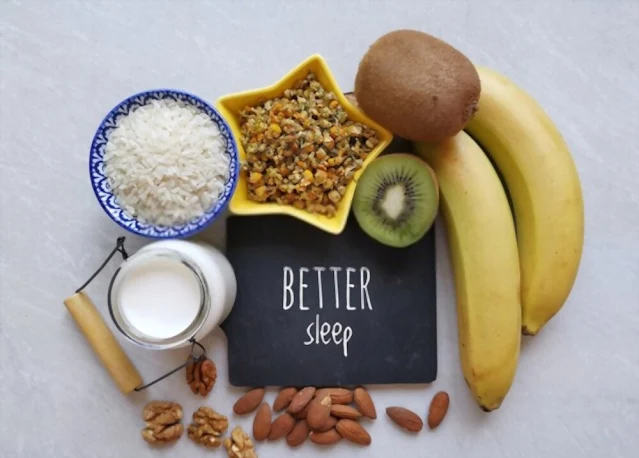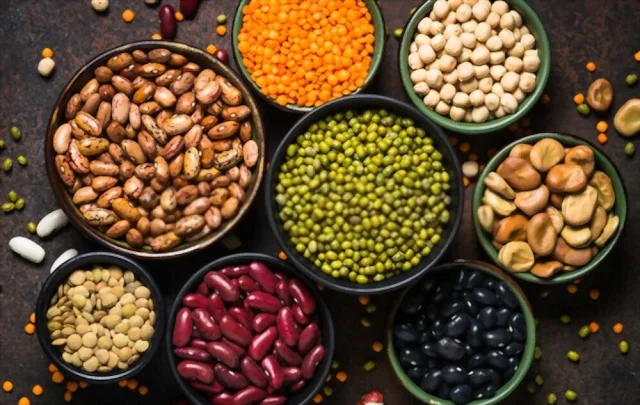People are going crazy over low-carb diets. If the Atkins and Dukan diets were popular in the early 2000s, then the ketogenic and low-carb diets are not far behind. Many switch to a low-carbohydrate diet to shed a few pounds or maintain excellent health.
As you know, a low-carb diet is slightly different from a "normal" healthy diet. Having an emphasis on fruits, vegetables, whole grains, and lean protein sources. Low-carb diets can be very high in fat and proteins while deficient in carbs.
When starting a low-carb diet, one of the first questions people ask is, "What can I eat?" Most think that it's just meat and salad. However, there are more things to eat than you might realize.
I'll give you options for what you can make at home, then move to pre-packaged alternatives. If you're in a hurry and just want a short answer, I'll have a list of easy meal ideas for you too.
Reasons to Start Eating a Low-Carb Diet
There are many different diets and nutrition plans to choose from, but which one should you follow?
The ketogenic diet was developed in the 1920s as a treatment for epilepsy, but it became mainstream when obesity rates started to rise in America. Researchers began examining low-carb diets as an alternative to high-carbohydrate, low-fat diets that doctors often recommended at the time.
A low-carb diet restricts the number of carbohydrates you eat. This diet is often used for losing weight because it helps control your blood sugar levels, preventing hunger pangs, cravings, and overeating. Low-carb diets can also help improve your overall health.
Here are some reasons why you might want to start eating low-carb:
- Weight loss: People who follow a low-carb diet tend to lose more weight than those on a calorie-restricted diet or those who don't restrict their carbs. This is because they generally eat fewer calories overall. When people limit their carb intake, they tend to eat fewer processed foods and more protein-rich foods like meat and fish, which naturally contain fewer carbs than pasta or bread.
- Better blood sugar control: One of the main reasons people go on a low-carb diet is so they can keep their blood sugar from spiking up too high after meals. High blood sugar levels are linked with insulin resistance, which increases your risk for type 2 diabetes and heart disease over time. When you cut back on carbs, your body will burn fat stores.
- Increased energy: The lower sugar content in low-carb foods helps keep blood sugar levels stable throughout the day, which can help give you more energy the day and make it easier to focus at work or school.
- Better sleep: Complex carbohydrates like grains and starchy vegetables can cause blood sugar spikes that lead to sleepless nights, especially if you eat them too late at night before bedtime. However, if those foods are removed from your diet, this will help you sleep better.
Side effects of a low-carb diet
Some potential side effects when cutting carbohydrates include fatigue, constipation, bad breath, and insomnia. The most common side effect is fatigue, which occurs when you restrict your calories too much.
The good news is that these effects disappear when you reintroduce carbohydrates into your diet.
Other common side effects include:
- Bad breath. This is caused by ketones produced during fat metabolism in the body. As ketones increase in the bloodstream, they also increase in the breath. It's normal for this to happen when you're in ketosis, but it's essential to brush your teeth more often (especially after eating high-fat foods) and use mouthwash if necessary.
- Constipation can occur when you restrict carbohydrates because fiber is found primarily in fruits, vegetables, and whole grains, which are usually eliminated or limited during a low-carb diet. You can get around this by increasing your fluid intake (particularly water), consuming more non-starchy vegetables, and increasing your intake of healthy fats (like avocado). Staying active will also help things move along as well!
What to Eat on a Low-Carb Diet
A low-carb diet is a way of eating that limits the number of carbohydrates you eat to 20-30 grams a day or less. The exact amount varies individually, but the idea is to keep your carb intake below 50 grams daily.
Low-carb diets are trendy and for a good reason. They can help you lose weight and improve health markers like blood pressure and blood sugar levels. They also tend to improve cholesterol levels and reduce inflammation in the body.
The best part about low-carb diets is that they're easy to follow because there aren't many restrictions on what you can eat. You just need to add more protein and fat to your diet.
What are carbs?
Carbohydrates are one of three nutrients that provide energy for all cells in the human body (the others being protein and fat). There are two types of carbohydrates: simple and complex. Simple carbohydrates include sugar, syrups, and fruit sugars (fructose). Complex carbohydrates include starches like pasta, rice, potatoes, and bread.
If you're new to low-carb eating, here are some of the best foods to keep on hand:
- Vegetables and fruits: Veggies and fruits are naturally low in carbohydrates, so they fit well into any diet plan. They're also rich in vitamins and minerals, which can help make your body healthier overall.
- Legumes: Beans, lentils, and peas are other great protein sources that work well with any diet plan. They're also high in fiber, which helps keep you feeling full longer, so you don't overeat.
- Fats: Butter, olive oil, avocado oil, and coconut oil are all excellent fat sources in low-carb diets. Eggs contain healthy fats that help you feel full longer without increasing calorie intake.
- Protein: Lean cuts of beef, pork tenderloin, or chicken breast are all excellent protein sources on low-carb diets. Fish like salmon or tuna are also good choices because they're lower in mercury than other types of seafood. Tofu is another excellent source of protein that doesn't have any carbs!
Steps to Going Low-Carb Diet
Going low-carb isn't tricky, but it does require some planning. If you're new to this way of eating, here are the first steps to take:
- Choose your carbs wisely. The main types of carbohydrates you'll want to avoid are the refined ones found in processed foods like bread, pasta, and rice. Whole grains are better choices because they contain more fiber, vitamins, and minerals than their refined counterparts.
- Eat lots of vegetables. Eating lots of vegetables with every meal will help keep hunger at bay and prevent binging on high-carb foods.
- Eat lots of meat, fish, eggs, and cheese; they fill and provide all the protein you need without the carbs in grains and legumes.
- Don't overdo high-fiber foods. While fiber is essential to a healthy diet, too much can cause gastrointestinal problems such as bloating and gas. Start with a small amount of fiber (15g or less per day) and gradually increase it over time if desired.
- Eat plenty of protein and fat. Protein helps you feel satisfied while helping you build muscle mass, while fats help keep you full longer than other nutrients. Choose healthy sources of these nutrients whenever possible — meat, seafood, and legumes are good options for protein; nuts and seeds make excellent sources of fats that don't contain saturated fats or cholesterol (which means they're heart-healthy).
Putting a Low-Carb Diet Together
Many people are wondering how to put a low-carb diet together.
Here are some tips and ideas to help you get started.
You first need to ensure that your diet has enough protein and fat. Protein and fat help keep you full even if you eat fewer dietary carbohydrates.
You can eat high-fat foods like meat, eggs, and cheese or choose low-carbohydrate vegetables like leafy greens (spinach, kale, etc.). Nuts and seeds also make good high-fat options.
When choosing low-carbohydrate vegetables, look for those higher in fiber, like broccoli, cabbage, spinach, and other dark green leafy vegetables. They tend to be lower in calories than starchy vegetables such as potatoes and carrots, so they can help keep your calorie intake down while still providing some of the nutrients you need.
Another key is avoiding processed foods — especially those with added sugar or artificial sweeteners — because they can cause blood sugar fluctuations, leading to weight gain over time. You want to stick with real food as much as possible so that when your body needs energy, it gets it from food rather than sugar or artificial sweetener.
Wrap Up
If you're interested in starting a low-carb diet, you should keep a few things in mind. First, make sure you do your research and understand the basics of low-carb eating. Second, talk to your doctor or a registered dietitian to get their professional opinion on whether a low-carb diet is proper for you.
And finally, take things slowly at first - don't try to go from 0 to 60 overnight. By following these tips, you'll be on your way to starting a healthy and sustainable low-carb diet that works for you.






Post a Comment